Fun facts about the greenhouse and the plants within
When was the greenhouse built? How many species of plants are growing in the greenhouse? Why do we call our corpse flower "Wally"? Read on to learn the answers to these questions and more!
Fun facts about the greenhouse and the plants within
When was the greenhouse built? How many species of plants are growing in the greenhouse? Why do we call our corpse flower "Wally"? Read on to learn the answers to these questions and more!
Construction of Jordan Hall (now the Biology Building) and the greenhouse was completed in 1955. A dedication was held June 6-9, 1956.
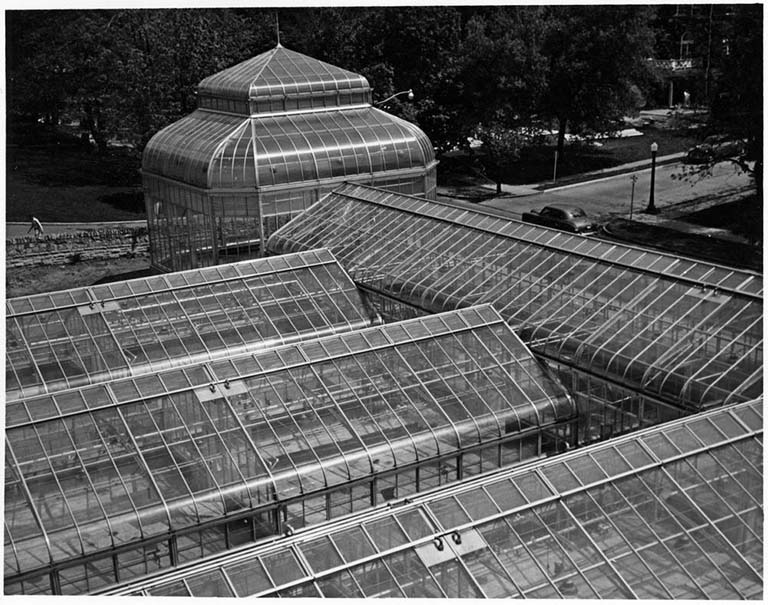
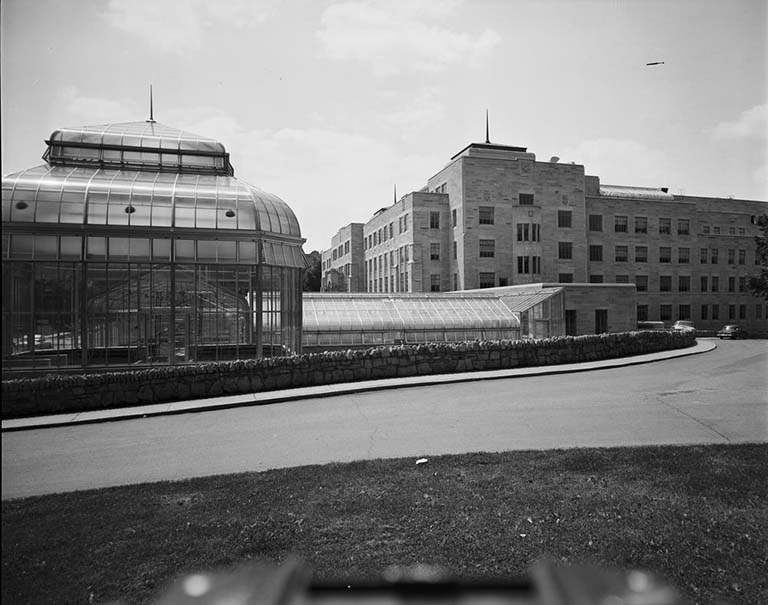
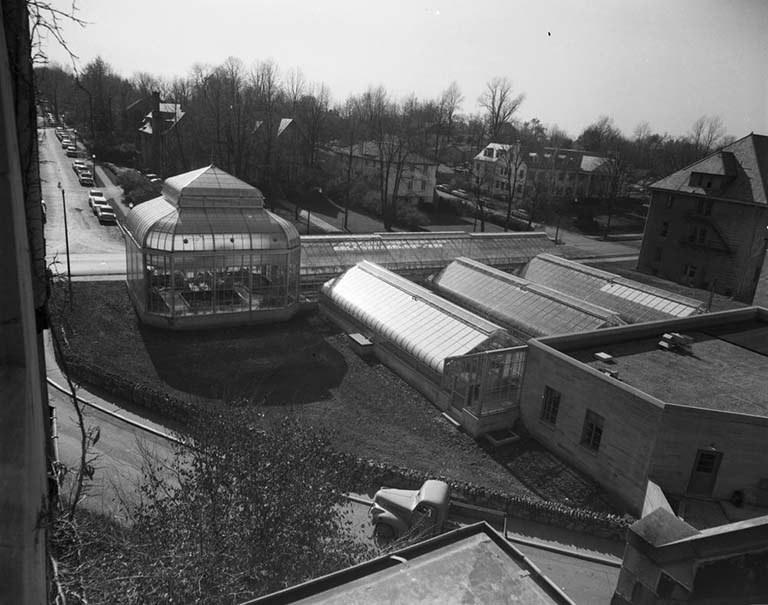

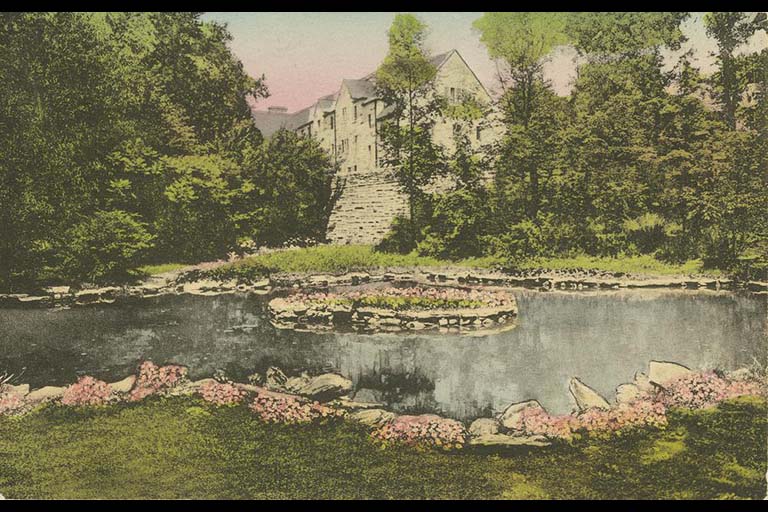

In the early 1900s, a limestone quarry was converted into a scenic green space known as the Sunken Garden. Jordan Hall (now the Biology Building) and its greenhouse were built on that space in 1955. A spring that once fed the Sunken Garden pond now feeds a small stream that flows through the dirt floor of the basement beneath the greenhouse rooms—possibly on its way to the Campus River.
Something in common? In its day, the Sunken Garden was known as the Passion Pit. The greenhouse made the list of romantic campus corners in Inside IU's February 2019 "The best places to take your valentine on IU campuses across the state" article. The article punned, "… and let your love grow."
Nearly 800 different species of plants can be seen in the greenhouse.


The sago palm (Cycas revoluta)—found in Room P—is believed to be one of the oldest plants in the greenhouse. The plant is rumored to have been growing in an IU Bloomington campus greenhouse since 1910 and transferred to our greenhouse sometime after it was built in 1955.
Sago palm is a common name for many plants grown for a starchy food known as sago. Some are true palms; however, our sago palm is a cycad. Sago from cycads must be detoxified before eaten.
"Wally" is the nickname of our Amorphophallus titanum (a.k.a. titan arum, corpse flower). This amazing plant produced its first bloom in 2016. Its stunning inflorescence unfurled on Friday evening, July 29, 2016. Thousands of visitors stood in line for hours over the weekend in order to see Wally.
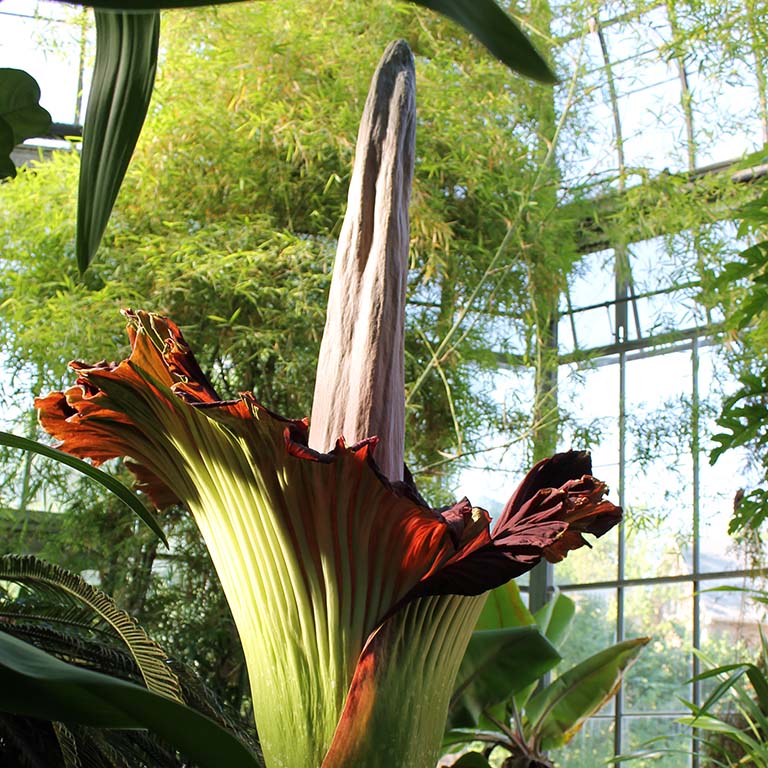
Greenhouse staffers dubbed the Amorphophallus titanum (a.k.a. titan arum, corpse flower) "Wally" in honor of Hugh Wallace "Wally" Scales, the first manager of the Jordan Hall (now Biology Building) greenhouse. Scales was largely responsible for collecting plants and building up the teaching collection and conservatory.

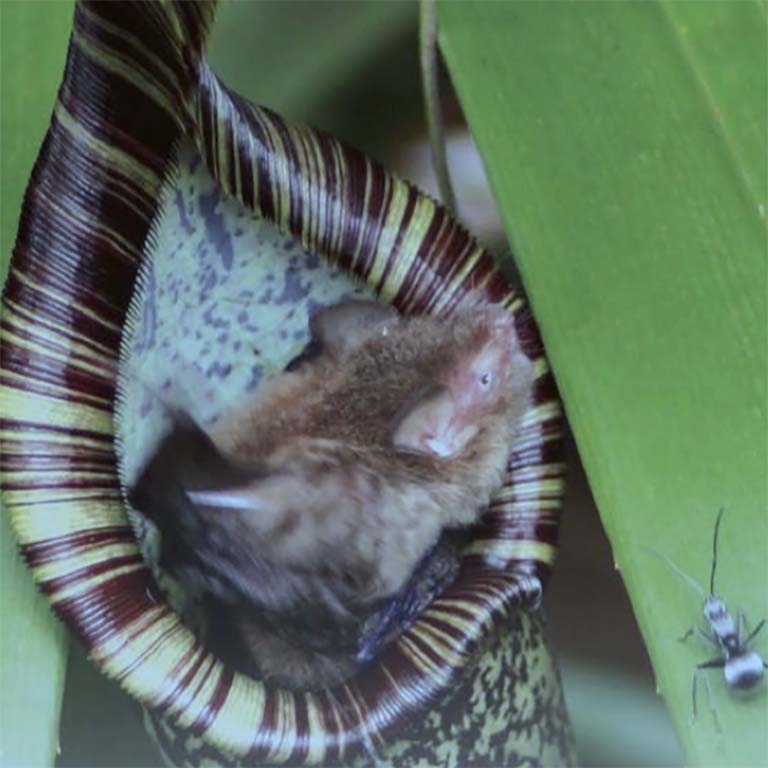
Scientists have discovered that bats make use of pitcher plant traps in a mutualist sort of way. The woolly bat (Kerivoula hardwickii) regularly roosts in Nepenthes hemsleyana traps in the peat-swamp forests of Brunei, Borneo. The bat settles in head first above the digestive fluid in the girdle-like structure immediately above where the trap tapers significantly. It doesn't even use its feet to hold on because it fits so perfectly. This secure roost helps bats avoid detection by predators, and the plant benefits from the nutrients, particulary nitrogen, in the bat feces.
See several species of Nepenthes (sans bats) in Conservatory Room F in the greenhouse.
Former greenhouse supervisor John Lemon began working in the greenhouse on January 31, 1972, when he was a student. He became head of the greenhouses in 2002. Lemon retired on March 31, 2023.
